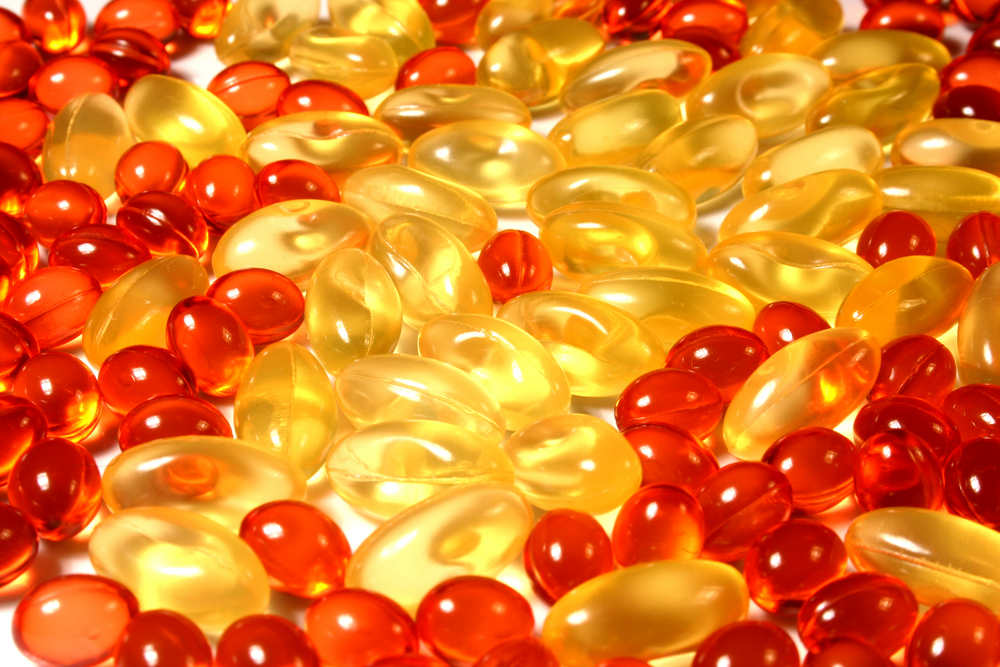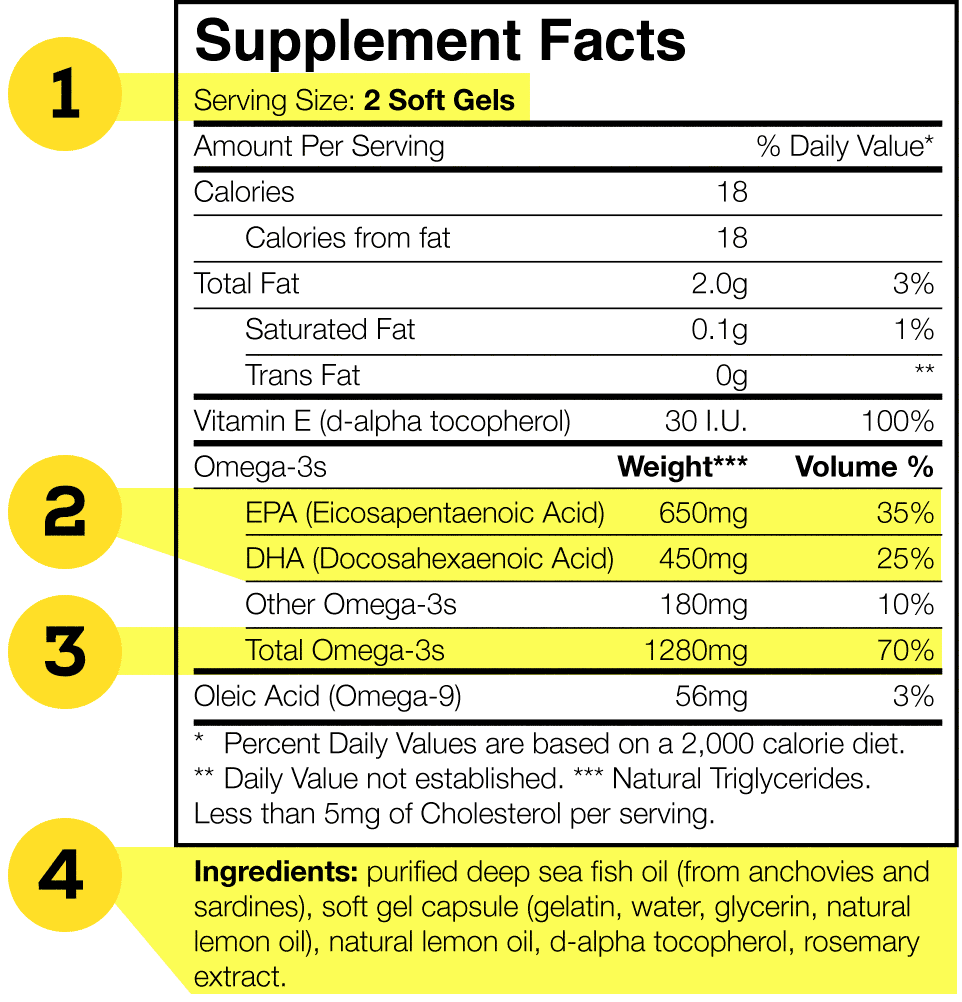Omega-3 Basics
Comprising a US$1.69 billion market at the raw material segment of the supply chain in 2022, the EPA and DHA omega-3 industry is diverse and dynamic in scope. EPA and DHA oil is used in the following end use applications:
- Dietary supplements
- Functional foods and beverages
- Infant nutrition products
- Pharmaceuticals
- Pet foods
- Clinical nutrition and medical foods
About EPA and DHA Omega-3s
EPA (eicosapentaenoic acid) and DHA (docosahexaenoic acid) are long-chain omega-3 polyunsaturated fatty acids (O-3s) that are abundant in fish, shellfish, and some algae and genetically engineered plants. The body needs EPA & DHA omega-3s to develop and function optimally in every stage of life.
There are more than 50,000 published studies on EPA and DHA, including more than 5,000 human clinical trials. The vast body of science associated with omega-3s supports consumption for overall wellness, including heart, brain, eye, and prenatal/maternal health.
GOED recommends consuming 500 mg of combined EPA and DHA per day for general health, and higher quantities for specific life stages or health conditions. Most of the global population consumes significantly less EPA and DHA than recommended.
Omega-3 Sources
GOED promotes the consumption of EPA and DHA omega-3s, which are available from a variety of sources. The vast majority come from marine sources including fatty or oily fish, fish body or liver oils, marine crustaceans such as krill, marine microorganisms such as algae, or, more recently, several terrestrial plants that have been genetically modified to produce EPA and DHA.
Seafood
 Overall, seafood is the best way to consume EPA and DHA simply because of all the other nutrients that are part of the fish. High omega-3 choices include salmon, tuna, mackerel, and pollock. Smaller-bodied forage fish species are also a high source of EPA and DHA. This category includes sardines, anchovies, herring, mackerel, capelin, and hoki. Most government recommendations suggest consuming 2-3 servings of fatty fish per week to achieve 250 mg of EPA and DHA per day.
Overall, seafood is the best way to consume EPA and DHA simply because of all the other nutrients that are part of the fish. High omega-3 choices include salmon, tuna, mackerel, and pollock. Smaller-bodied forage fish species are also a high source of EPA and DHA. This category includes sardines, anchovies, herring, mackerel, capelin, and hoki. Most government recommendations suggest consuming 2-3 servings of fatty fish per week to achieve 250 mg of EPA and DHA per day.
Omega-3 Supplements
 Supplementation is a key way to consume enough EPA and DHA to benefit your health. Supplements are made from many different marine sources and all are equally valuable in terms of providing EPA and DHA, so it’s personal preference which you choose.
Supplementation is a key way to consume enough EPA and DHA to benefit your health. Supplements are made from many different marine sources and all are equally valuable in terms of providing EPA and DHA, so it’s personal preference which you choose.
Anchovy oil
Anchovy is the primary oil provided in omega-3 supplements from a number of different fisheries throughout the world, including Peru, Chile, Morocco, and Turkey.
Cod liver oil
Cod liver oil supplements were one of the first commercially sold omega-3 dietary supplements in the modern marketplace and were originally sold for the vitamin content rather than EPA and DHA but remain a popular source of omega-3s.
Pollock oil
Pollock oil is mostly extracted from the livers of pollock caught in Alaska.
Salmon oil
Salmon by-products can be cold-pressed to make “virgin” or minimally processed salmon oils that preserve some nutrients lost in traditional processing.
Tuna oil
Tuna oils are typically made from the by-products of skipjack and yellowfin tuna (not the more controversial bluefin tuna) and are often used to fortify infant formulas because of their high DHA content.
Fish roe oils
Oils made from the roe of different fish such as herring are also available in dietary supplements.
Krill oil
Supplements made from krill — tiny crustaceans from the waters of the Antarctic — provide a phospholipid source of EPA and DHA and are generally available in a smaller pill.
Calanus oil
There is also a small but growing market for EPA and DHA supplements made from calanus, a small crustacean from the Arctic.
Squid oil
Some supplements use oil made from the by-products of the squid meat production industry, which is relatively high in DHA.
Green-shelled mussel oil
New Zealand’s green-shelled mussels also contain EPA and DHA and are being used in supplements.
Algae oil
While an algae oil containing DHA has been on the market for decades, only recently have additional algae sources been commercialized. There are now options for EPA from algae, additional sources of DHA from algae and combinations of the two with different levels of EPA and DHA content. Omega-3 algae sources should not be confused with other algae like spirulina or chlorella.
Genetically modified canola and camelina oil
These two plants are terrestrial plants that have been modified to express EPA and DHA. Both are currently in agricultural trials in different countries, and initial commercial products will focus on aquaculture.
Fortified Foods
 Some consumers prefer to get EPA and DHA from non-seafood or non-supplement food sources.
Some consumers prefer to get EPA and DHA from non-seafood or non-supplement food sources.
Fortified dairy
EPA and DHA oils can be added to dairy products, like milks and butter- or margarine-based spreads.
Fortified eggs
Egg producers can feed EPA and DHA meal to chickens to raise the EPA and DHA content of their eggs.
Baked goods
Manufacturers have even fortified baked goods like cookies and bread with EPA and DHA oils.
Fortified meats
Feeding terrestrial livestock EPA and DHA can result in higher EPA and DHA in its meat. Manufacturers have experimented with higher EPA and DHA beef, chicken, and lamb.
What about walnuts, chia, and flax?
 Walnuts, chia, flax, and other plants are sources of ALA omega-3, not EPA and DHA omega-3s. ALA is an important nutrient, but it's no replacement for EPA and DHA, and many people get enough ALA in their diets without much effort. Click on the infographic at the left to learn more.
Walnuts, chia, flax, and other plants are sources of ALA omega-3, not EPA and DHA omega-3s. ALA is an important nutrient, but it's no replacement for EPA and DHA, and many people get enough ALA in their diets without much effort. Click on the infographic at the left to learn more.
FAQs
See below for a list of commonly-asked questions about EPA and DHA omega-3s.
-
Do we even need fat in our daily diet?
Absolutely. Every cell in the human body contains fat in its cell membrane and fat is required for healthy cells. The quality of fat within the cells helps to determine the structure and function of the cells and ultimately your body. Be sure to incorporate healthy fats like omega-3s and decrease your consumption of unhealthy fats, including saturated and trans fats.
Increasing consumption of healthy omega-3 fats in your diet and reducing bad fats helps to support overall health.
-
I have heard that some fats may be healthier for me than others. Is this true?
Yes, there are great and not-so-great fats. Let's start with the bad news first. Too high of an intake of trans fats and saturated fats has a long history and lots of research supporting a negative impact on health.
In contrast, several types of unsaturated fats are considered healthy fats. Omega-3s are an example of a healthy fat. Omega-3s in particular help your heart, brain and eyes develop and function properly.
Heart: As part of a healthy lifestyle, omega-3s may help you maintain healthy blood pressure, support healthy triglyceride levels and manage your risk of heart disease.
Brain: The omega-3 DHA (docosahexaenoic acid) makes up a large percent of the brain and helps support brain health during all stages of life.
Eyes: DHA is a major structural component in the retina of your eye and plays an important role in visual development and function throughout life.
-
What does the term “polyunsaturated” fatty acid (PUFA) mean?
“Poly” refers to unsaturated fatty acids that have more than one double bond found in the structure of the fat (between carbon atoms). Two important polyunsaturated fatty acids that help to support overall health include EPA (eicosapentaenoic acid) and DHA (docosahexaenoic acid).
-
Should I be concerned by the term “fatty” fish?
In a single word, no. Some fish can contain up to 10 times more fat than other types of fish or shellfish but even the fattiest of fish are still much leaner than most other animal fat sources. Keep in mind that the fat found in fish — omega-3s — is considered good fat and is important for your health. Your body cannot make omega-3s on its own; therefore, you must incorporate them into your diet in order to get the benefits.
-
Is there a recommended intake for EPA and DHA omega-3s?
Although omega-3s are considered vital, there is no established Adequate Intake (AI) or Dietary Reference Intake (DRI) in the United States for EPA and DHA omega-3s, but many other countries support recommendations of 250, 500 or even 1000 mg per day. Additionally, a growing number of expert bodies and health professionals recommend 250 mg to 500 mg of EPA and DHA per day.
-
How do I select a high-quality omega-3 supplement?
The key to selecting a high-quality omega-3 supplement is to read the label to identify how much EPA and DHA is included in each serving. Amounts of total omega-3s, as well as EPA and DHA, all vary considerably between products, but should be clearly identified on the label. If they are not clearly identified, continue to look for a product that labels all three of these important components.

- The Serving Size is listed here on the label. This is how much you need to ingest to obtain the amount of omega-3s, EPA and DHA listed on the label. Serving size may often be more than one capsule or softgel.
- The amounts of EPA and DHA are listed here. EPA and DHA are associated with different health benefits, so it is important that manufacturers clearly identify how much each serving contains. The amount of EPA and DHA in a supplement is generally less than the total amount of omega-3s. For example, some packaging will feature “Fish Oil 1000mg” but this describes the amount of total fish oil in the product and not the specific levels of EPA and DHA. For some health concerns, practitioners recommend patients take an omega-3 supplement that provides a specific level of EPA, DHA or both.
- This field contains the total amount of omega-3s per serving.
- This list contains all of the ingredients contained in the product, including the ingredients used to blend the oil and make the capsule. Ingredients, such as rosemary and d-alpha tocopherol (Vitamin E), are antioxidants that have been added to better preserve the fish oil and keep the product fresh tasting.
-
Can vegetarians and vegans get EPA/DHA omega-3s?
Yes! If you follow a vegetarian or vegan diet, there are omega-3 supplements on the market that are made from marine algae, which contain high levels of EPA and DHA. Look for omega-3s sourced from algae in the supplements aisle of your local grocery and health food stores.
-
How do omega-3s differ from omega-6s?
There are many similarities between omega-3s and omega-6s. They both help support the health of the body’s cells. Your body does not make significant amounts of EPA and DHA (which are omega-3s), so you must get them from your diet.
A key difference between these fatty acids is where they are found. Omega-3s come primarily from cold-water fatty fish while omega-6s are found in plant oils, including corn, soybean and sunflower oils.
When our ancestors hunted and gathered their food supply, they were able to consume plentiful amounts of vegetables, fruits and fish on a daily basis. Today, busy lifestyles are driving people to consume processed and snack foods high in omega-6 fatty acids (corn, sunflower, vegetable oils), including fried foods (potatoes disguised as French fries). Omega-6s are needed for human health, but the key is to have a healthy balance. Many Western diets are experiencing a significant imbalance of omega-6 to omega-3.
-
What’s the difference between ALA, EPA and DHA omega-3s?
There are three main omega-3s – EPA, DHA and ALA.
ALA (alpha-linolenic acid) is a true “essential” omega-3 because our bodies can’t make it on its own. We need to get ALA from our diet by consuming ALA-rich foods like flax and chia seeds. ALA is a precursor to EPA and DHA, but the conversion rate in our bodies is extremely low.
EPA (eicosapentaenoic acid) and DHA (docosahexaenoic acid) are the primary omega-3s known for supporting heart, brain and eye health at all stages of life. In fact, our heart, brain and eyes contain the highest omega-3 content compared to other parts of the human body. -
Are all omega-3s digested and absorbed the same way by my body?
There are several factors that play a role in digestion and absorption. Everybody is different and so is the ability to digest and absorb nutrients, including omega-3s.
There are small differences in absorption rates among the various forms of omega-3s. When adding an omega-3 supplement to your daily regimen, ensure that the supplement delivers adequate amounts of EPA and DHA (as shown on the Supplement Facts label).
If you are experiencing “fishy burps” from your omega-3 supplement, you may want to try a different brand – always look for a reputable brand of high-quality omega-3.
If you have questions consult your health care professional.
-
Can I get my omega-3 or fatty acid levels tested?
Yes, you can have your omega-3 or fatty acid levels tested to see if you may have lower than recommended levels of omega-3s. Your current blood levels will help your health care practitioner determine the best consumption amount for you.
Click the links below to see omega-3 test kit options:
-
Should I be concerned about contaminants like mercury in fish or fish oil supplements?
Because of their natural environment, some fish may contain higher levels of mercury, PCBs (polychlorinated biphenyls), dioxins and other environmental contaminants than what may be found in a fish oil supplement. The benefits of fish consumption far outweigh the potential risks when the amount of fish eaten is within the recommendations established by the Food and Drug Administration (FDA) and the Environmental Protection Agency (EPA). As a matter of fact, the FDA and EPA recently recommended that pregnant women and children eat more fish due to its health benefits.
Some fish, like wild salmon, have lower levels of contaminants than fish like swordfish and tilefish, so understanding what fish have low levels of contaminants is important. Learn more seafood recommendations from Monterey Bay Aquarium Seafood Watch.
As for omega-3 dietary supplements, manufacturers purify the oil to reduce the level of environmental contaminants in the end product. Before the supplements are placed on store shelves the fish oil is tested to ensure it meets the GOED industry standard for contaminant levels.
-
How sustainable are omega-3 supplements?
Many of the fisheries from which marine oils are sourced have either been certified—or are currently pursuing certification—by the Marine Stewardship Council (MSC) or Friend of the Sea, another respected certifying group. Some fisheries, like the Peruvian anchovy fishery, have their own dedicated sustainability monitoring bodies. Read on to learn more.
